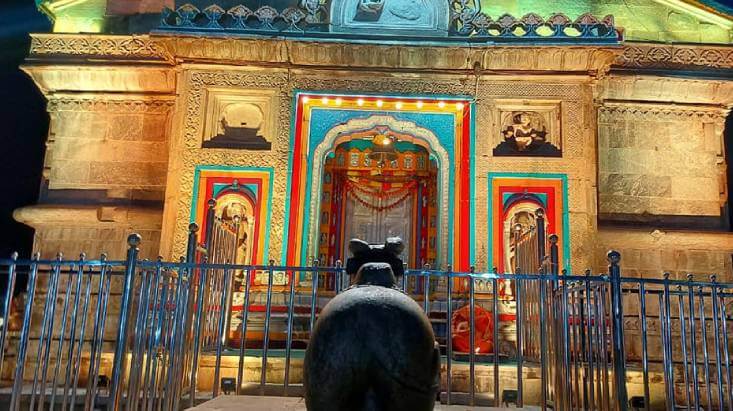 admin
Published: 09 Nov, 2023
admin
Published: 09 Nov, 2023
10 Famous Temples to Visit in India
India is a land where ancient stones whisper tales of devotion and timeless rituals. Known for high spirituality and devotion, The Indian culture has given the country various pilgrimage sites that will soothe your mind. Here are the top 10 temples of India, each a masterpiece of architectural grandeur and a beacon of faith that has drawn pilgrims for centuries. From the snow-kissed peaks of the Himalayas to the tropical shores of the South, these sacred spaces are not just places of worship but also repositories of history and culture. Step inside these hallowed halls to experience the divine tapestry of mythology, art, and spirituality that is woven into the very fabric with these 10 Top Temples to Visit in India.
- Kedarnath Temple, Uttarakhand
- Somnath Temple, Gujarat
- Badrinath Temple, Uttarakhand
- Kamakhya Temple, Assam
- Rameshwaram Temple, Tamil Nadu
- Gangotri Temple, Uttarakhand
- Kashi Vishwanath Temple, Uttar Pradesh
- Lord Jaganath Temple Puri, Odisha
- Triputati Bala Ji Temple, Andhra Pradesh
- Mahakaleshwar Temple Ujjain, Madhya Pradesh
Kedarnath Temple, Uttarakhand
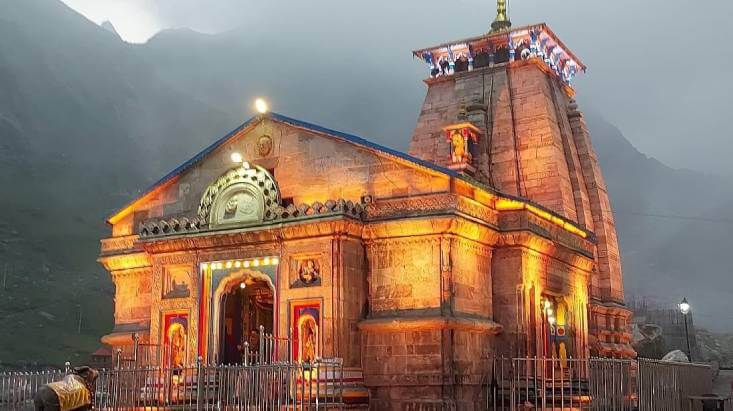
Kedarnath, a highly spiritual and mesmerising town in India, is home to the highly revered Kedarnath Temple, one of the 12 Jyotirlingas dedicated to Lord Shiva. Situated at an altitude of 3,580 meters near the Charbari Glacier, this ancient temple holds deep significance in Hindu mythology.
The Kedarnath Temple is believed to be thousands of years old and is known as the place where Lord Shiva absolved the Pandavas of their sins after the epic Kurukshetra war in the Mahabharata. Its location amidst the snow-capped peaks of the Himalayas makes it a popular temple in India for nature enthusiasts and trekkers. Reaching the temple is an adventure in itself, involving a challenging 16-kilometer trek that starts from Gaurikund. Before embarking on the journey, pilgrims often take a holy dip in the hot water springs at Gaurikund, dedicated to Goddess Parvati.
The temple is not only associated with various legends and mythologies but is also renowned for its miraculous survival during the devastating cloudburst and flood of 2013, which caused extensive damage to the surrounding town but left the temple unharmed.
Kedarnath Temple is an integral part of the Char Dhams of Uttarakhand, which includes Badrinath, Gangotri, and Yamunotri. Among these four pilgrimages, Kedarnath is known to be the most challenging due to its rugged terrain.
Architecturally, the temple is a masterpiece with massive stone walls, a distinctive conical Shikhara (spire), and a large stone pedestal encircling the sacred sanctum. The temple is adorned with intricate carvings and sculptures, showcasing the rich heritage of Hindu architecture. The adorned beauty of the temple exceeding the Himalayan peaks all around makes it a must visit temple in North India.
Due to the extreme weather conditions at such a high altitude, the temple remains open for only six months, from late April or early May until November. When winter arrives, the temple closes its doors as the region becomes snowbound. This cyclical opening and closing pattern adds to the temple’s aura of mystery and spirituality.
The harmonious Kedarnath temple blended with spirituality, offers an unforgettable experience to pilgrims, trekkers, and nature enthusiasts.
Somnath Temple, Gujarat
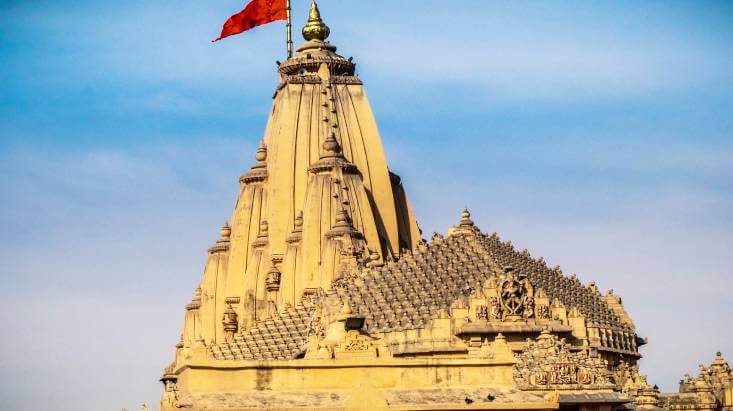
The Somnath Temple in Gujarat is the first of the 12 Aadi Jyotirlingas in India, making it a place of immense importance in Hinduism. This major pilgrimage site holds not only spiritual significance but also stands as a remarkable piece of history and heritage. According to belief, the temple’s construction dates back thousands of years, showcasing remarkable architectural prowess with intricate detailing.
Dedicated to Lord Shiva, the temple’s origins are tied to a fascinating legend. It is said that Som, the moon god, built the Somnath Temple as a gesture of respect towards Lord Shiva, seeking forgiveness for a curse placed upon him by his father-in-law, Daksha. This curse was a result of the moon god’s exclusive affection for one of his wives, Rohini, neglecting his other 26 wives, who were Daksha’s daughters.
The history of the Somnath Temple is marked by destruction and reconstruction. It survived numerous attacks by rulers like Mahmud of Ghazni and Alluddin Khilji, only to be rebuilt by devoted individuals time and again. The present temple, with its Chalukya architecture, was finally completed in 1951, boasting exquisite carvings, sculptures, and a magnificent 155-foot-high Shikhara. Among the beautiful temples of India, Somnath holds a high ground in the spirituality admirers.
The significance of the temple extends beyond Lord Shiva. It is also associated with Shri Krishna, as it is believed to be the place where he concluded his earthly journey. The temple’s daily worship, enchanting evening aarti ceremonies, and vibrant celebrations attract a constant stream of devotees, making it a truly mesmerizing and spiritually enriching experience for all who visit.
Badrinath Temple, Uttarakhand
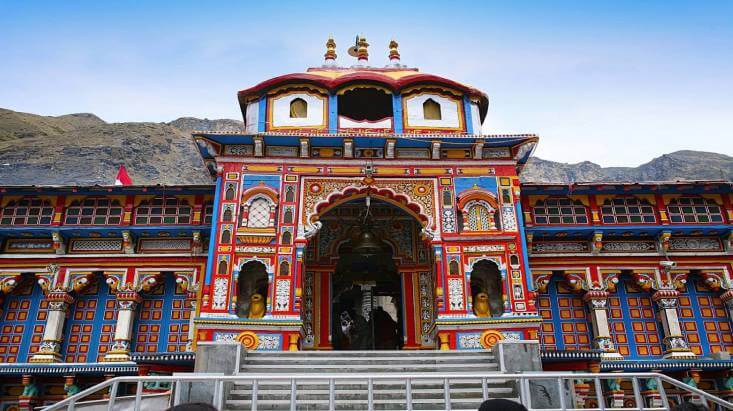
Believed to be around 1,200 years old, Badrinath Temple, the Old age pilgrimage site is one of the most ancient and revered pilgrimage sites in India.
At the height of 3,100 in the Himalayas, it is marked as one of the highest temples around the world. The temple, surrounded by Alaknanda River, engulfs the landscape in a scenic beauty complemented by the lush greenery. Also, the breathtaking Neelkanth peak adds up to the spiritual experience.
The Badrinath Temple was established by the renowned Hindu philosopher and reformer, Adi Shankaracharya, during the 8th century in the base of Swargarohini mountain range, which is considered to be the path to heaven. The main idol in the temple is made of Shaligram stone and represents Lord Badrinath in a meditative posture and is believed to be self-manifested. Badrinath Temple is a protected monument under the Ancient Monuments and Archaeological Sites and Remains Act, 1958. Badrinath Temple has a distinctive conical-shaped roof made of gold-colored sheet metal, which adds to its unique appearance. The historical and architectural significance makes Badrinath temple a must-visit religious trip deestination for ones loving Indian History.
The Badrinath temple is from the four pilgrimage sites of the Char Dham, which is a pilgrimage circuit of four highly revered destinations according to Hindu mythology, which whoever visits all of them will surely attain peace after death. This is the reason which attracts devotees from all over India and around the world. Pilgrims take a ceremonial bath before entering the temple at the natural hot water spring, Tapt Kund as it is believed to have healing properties. The temple is also a part of the Indian epic literature, The Mahabharata, where it is described as the place where the Pandavas performed penance after the great war.
The temple remains closed during the winter months due to heavy snowfall and is reopened in late April or early May, and has a tradition of priests and staff migrating with the deity during its winter closure, relocating to the Narasimha Temple in Joshimath. As it is believed that Vedic hymns and rituals should regularly be performed at the temple, all the daily rituals and ceremonies are managed by the head priest. The Badri-Kedar Festival is celebrated with great enthusiasm and features colorful processions, dance, and music.
Badrinath Temple has been rebuilt and renovated several times in its history, especially after being damaged by earthquakes and floods. But now the temple is very conveniently reachable via road which is a part of the larger Char Dham Yatra route.
All the historical, natural, and spiritual significance makes Badrinath a must-visit temple in India for those seeking a unique and profound religious experience.
Kamakhya Temple, Assam
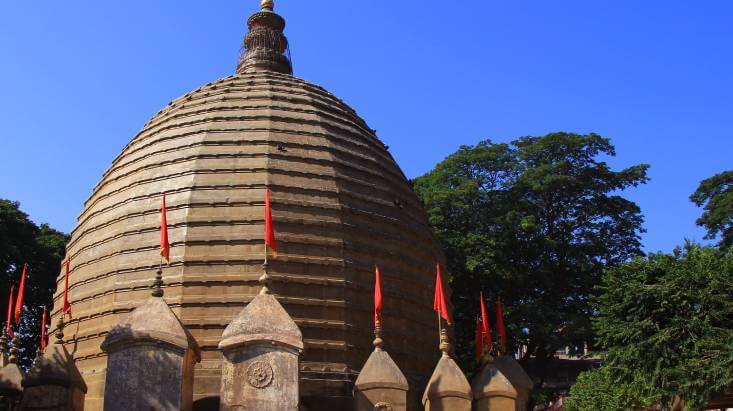
One of the most intriguing, unique, and among the best temples in India, The Kamakhya is a temple dedicated to Goddess Kamakhya, an embodiment of the Hindu Goddess Shakti. It is one of the 51 Shakti Peethas, where body parts of the Goddess Sati are believed to have fallen. Located in the Indian state of Assam, this unique temple doesn’t have an idol of the goddess but instead features a natural fissure in the rock that resembles the yoni, which symbolizes the creative and nurturing aspects of the goddess.
The temple hosts the annual Ambubachi Mela, a significant festival celebrating the menstruation of the goddess. During this time, the temple remains closed for three days as a mark of respect for the goddess’s natural cycle. The Kamakhya Temple is associated with tantric practices and is considered one of the most important centers for Tantric worship in India. The temple’s origins are ancient, with historical records suggesting it has existed for over a thousand years. Kamakhya Temple is perched on the Nilachal Hill in Guwahati, offering scenic views of the city and the Brahmaputra River making it a popular temple to explore for memorable experiences.
The temple complex extends beyond the main temple, including several smaller temples, shrines, and caves on Kamakhya Hill. Regular pujas and rituals are performed at the temple, attracting devotees and tourists from all over the world. The temple architecture blends different styles, including Ahom, Koch, and Mughal influences, making it an architectural marvel. Kamakhya Temple is a significant site for the Durga Puja festival, celebrated with great enthusiasm and devotion in Assam. The temple complex features a sacred water tank called Surya Kund, where devotees take a ritual bath before entering the temple. In addition to Goddess Kamakhya, the temple complex houses various other deities, each with their respective shrines and idols.
In the past, the temple was known for the practice of animal sacrifices, particularly buffalo sacrifices. However, this practice has been banned by the Indian government. Many devotees and sadhus believe that the temple possesses mystical energies and that the yoni symbolizes a source of powerful Shakti energy. The Kamakhya Temple is mentioned in various ancient texts and inscriptions, adding to its historical and cultural significance. Kamakhya is a popular Hindu temple and pilgrimage destination for devotees seeking blessings, fertility, and spiritual enlightenment.
The temple is known for the xorai plates, traditional Assamese brass offering plates, which are significant in the rituals and offerings. Devotees receive prasadam in the form of angabastra (revered cloth) worn by the goddess during the Ambubachi festival. Furthermore, the temple complex showcases Assamese art and cultural heritage through its architecture, sculptures, and artwork. The fuse of landscape beauty, architectural beauty, mysterious legends and myths, and spiritual significance makes Kamakhya Temple a mystique destination.
Rameshwaram Temple, Tamil Nadu
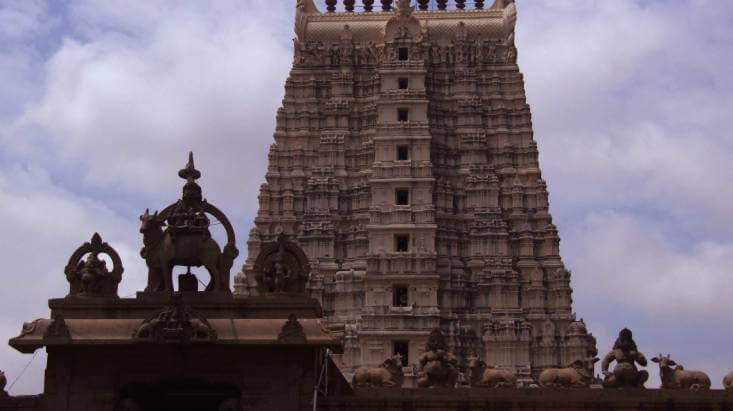
Cradled at the very southern tip of the Indian subcontinent, the Rameshwaram Temple, a highly revered place in India, stands as a mesmerising destination on its own. This sacred site, situated on Rameswaram Island, holds a special place in the hearts of pilgrims, both from India and around the world. It’s not just any temple; it’s one of the four destinations of the Char Dham Yatra pilgrimage, alongside Badrinath, Dwarka, and Puri. This spiritual magnet draws devotees seeking spiritual purification and the ultimate goal of moksha, or liberation.
Dedicated to Lord Shiva in the form of Ramanathaswamy, the temple is a cornerstone of the Hindu faith and is revered as one of the 12 Jyotirlinga shrines. Its rich history is intertwined with the epic saga of the Ramayana, as it’s believed to be the very spot where Lord Rama constructed the famous bridge, known as Adam’s Bridge or Rama Setu, to rescue his beloved wife, Sita. The religious significance makes the Rameshwaram a famous temple in south India.
One of the most striking features of the Rameshwaram Temple is its astonishingly long corridor, stretching a staggering 197 meters and adorned with thousands of intricately carved pillars. The temple complex includes 22 holy tanks, with the Agni Theertham holding particular significance, where pilgrims perform a ritual bath before entering the sanctum. According to local legends, the stones that once floated and were used to construct Rama’s bridge to Lanka are believed to be in the vicinity, adding to the temple’s mystique.
The temple’s architecture is a testament to the Dravidian style, with its exquisite stone carvings, towering gopurams (temple towers), and intricate artwork that beckons visitors to admire its beauty. One of the temple’s unique rituals is the “corridor pradakshina,” where devotees circumambulate the temple by walking along the lengthy corridor to seek blessings. Pilgrims also partake in the Setu Snan, a holy dip at Dhanushkodi, considered the starting point of Rama’s bridge. This hill in Rameshwaram provides panoramic views of the island and is steeped in the lore of Lord Hanuman’s quest for a medicinal herb during his journey to Lanka. The annual Rama Navami festival, commemorating the birth of Lord Rama, is celebrated with immense enthusiasm and devotion at the Rameshwaram Temple.
The temple’s ancient inscriptions tell tales of various dynasties and rulers patronising this sacred place as a best temple to visit in India for history buffs. The temple conducts the Agnitheertham ceremony, where priests perform a sacred fire ritual at the seashore to seek blessings. Throughout the year, the temple resonates with the joyous echoes of festivals like Maha Shivaratri, Aadi Amavasya, and Thirukalyanam, the divine wedding of Lord Rama and Goddess Sita.
With 1,212 intricately carved pillars, each bearing a unique design, the Rameshwaram Temple is an architectural marvel, inviting awe and admiration. It’s worth noting that Rameshwaram Island lies a mere 40 kilometres from Sri Lanka, sharing a deep historical and cultural connection with its neighbour. NASA’s satellite imagery even supports the belief that the Adam’s Bridge, mentioned in the Ramayana, maybe a reality.
Gangotri Temple, Uttarakhand
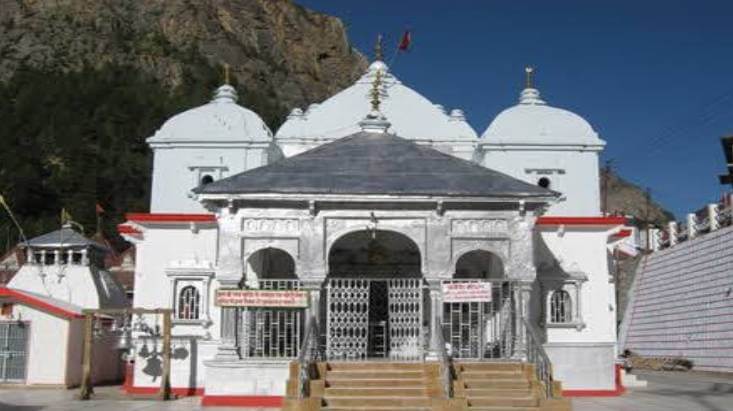
In the hills of the Garhwal Himalayas, at a breathtaking elevation of over 10,000 feet, lies the serene and majestic Gangotri Temple, a beacon of spirituality and adventure for travellers from all walks of life. The temple is also a pivotal piece of the Chota Char Dham Yatra religious tour, a quartet of pilgrimage sites that beckon the devout and the daring.
Imagine a river so sacred that it’s considered a divine mother; that’s the Ganga for India. Gangotri is where this life-giving river’s journey begins, at least in the hearts of those who follow her flow. But trek a little further, about 11 miles or so—and you’ll reach Gaumukh, the glacier that’s Ganga’s source, a hidden gem for those willing to wander off the beaten path. The trek is enjoyed by all, thus makes it a famous temple in India.
The temple itself stands as a testament to faith, wrapped in the lore of King Bhagirath, whose penance is said to have brought the holy river to Earth. And within its walls burns an eternal flame, the Akhand Jyoti, symbolizing the undying spirit of the Goddess Ganga.
It’s not just about the spiritual, though. Gangotri is a treasure trove of natural splendour, from the snow-dressed peaks that watch over it to the verdant valleys stretching like a green carpet. Trekking routes, like the challenging trail to Gaumukh or the scenic hike to Kedartal, offer vistas that can make you forget the world below.
And as evening falls, the Ganga Aarti ceremony transforms the place into a surreal spectacle of light, sound, and devotion, which is a dance of lamps and incense that lulls the river and its admirers into a divine embrace.
But it’s not just about what Gangotri gives us—it’s also about what we must give back. The region is under protection to keep its beauty untouched, its waters unpolluted, and its air as crisp as the day the world was born.
For those chasing the divine or the thrill of the climb, Gangotri opens its arms from late April to early November. When winter whispers in, the temple closes, and the deity travels to the cosy village of Mukhba, continuing the cycle of reverence and renewal.
Whether you’re looking to touch the heavens, cleanse your soul, or simply witness the Earth’s unspoiled grandeur, Gangotri awaits. It’s a place where the spiritual and the earthly intertwine, creating a tapestry of experiences that’s as rich as it is unforgettable.
Kashi Vishwanath Temple, Uttar Pradesh
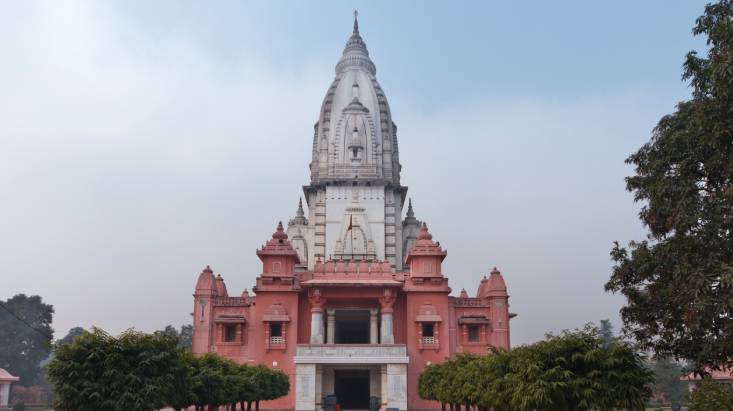
In the heart of Varanasi, on the western banks of the Ganges, stands the Kashi Vishwanath Temple, a beacon of spirituality and history. Not just a temple but a journey back in time to the cradle of Hindu culture. This temple has been mentioned in revered scriptures and has been a significant part of pilgrimage tourism hotspot since time immemorial.
This is where Lord Shiva, the cosmic dancer and destroyer, is worshipped in his Jyotirlinga form. These Jyotirlingas are believed to be resplendent pillars of light, and Kashi Vishwanath is one of the 12 sacred sites where this divine light touches the earth. The temple, with its golden spire, is a sight to behold. It’s said that the gold glinting in the sun is a physical reminder of the divine light within. This sacred structure as we see it today owes its existence to the Maratha monarch, Rani Ahilyabai Holkar, who reconstructed it in the 18th century, continuing the legacy of resilience and rebirth that the temple is known for.
Also, the ancient city of Varanasi is an alive city thrumming with the energy of scholars from the nearby Banaras Hindu University, artists, and spiritual seekers. They all converge here, seeking enlightenment, education, or just the sheer experience of being in one of the world’s oldest living cities.
The temple’s history is a tapestry of destruction and renewal, with the current structure standing tall as a testament to its indomitable spirit. Right beside it, the Gyanvapi Mosque stands as a symbol of the city’s complex history. At the same time, the immortal banyan tree within the temple’s precincts whispers tales of eternal wisdom to those who listen.
More than a structure, The Kashi Vishwanath temple is an experience. The ghats that line the river are like stairways for the soul, leading one to purifying dips and to the temple’s hallowed grounds. And if you’re there at the right time, you’ll witness the Annakoot festival, where a mountain of food is offered to the divine and then shared—a true feast of devotion.
In the evenings, the Ganga Aarti at Dashashwamedh Ghat casts a spell with its rhythmic chants and the dance of flames, all just a stone’s throw from the temple. It’s a performance that captures the essence of Varanasi—a city that celebrates life, learning, and liberation.
Lord Jaganath Temple Puri, Odisha
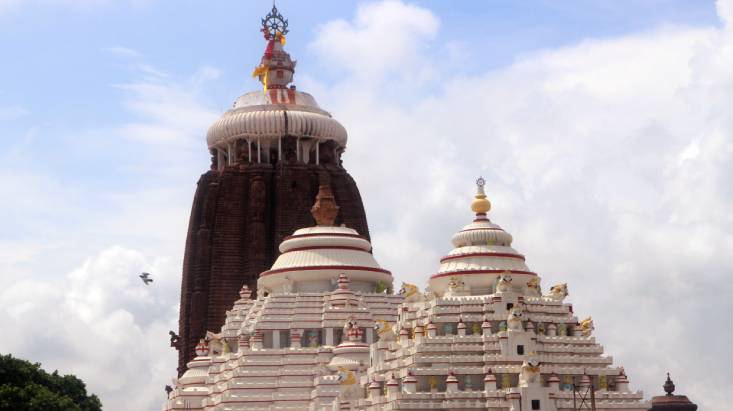
Stepping back in time to an era steeped in mystique and devotion – that’s what visiting the Jagannath Temple in Puri feels like. Present in the heart of Odisha, this ancient sanctuary isn’t just a structure of stone and wood but a living, breathing embodiment of spiritual ecstasy.
Deities present in the temple include Lord Jagannath, Balabhadra, and Subhadra are carved from sacred wood, riding majestically through Puri’s lanes during the Rath Yatra. The Rath Yatra is a divine event, one of the top events of religious tourism in India, where gods take to the streets, and the air buzzes fervently. It’s like witnessing a piece of heaven gliding on colossal chariots amidst a sea of humanity.
One remarkable aspect of the Jagannath Temple is its openness to all, regardless of caste. Devotees are allowed to enter the temple and partake in prasad. Whether you’re a seeker of truth, a lover of myth, or just plain curious, you’re welcome here. And every 12 to 19 years, the temple hits the refreshes in a ceremony called ‘Nabakalebara,’ replacing the old idols with new vigour. It’s like the temple’s own version of a spiritual reboot. Plus, with its four gates facing each cardinal direction, the temple symbolizes an embrace to all corners of the earth.
The temple’s lore is a cocktail of legends, history, and divine interventions – a treasure trove for anyone hungry for a good story. Its cultural heartbeat – the devotional music, the enthralling dances, and the soul-stirring dramas that have birthed entire art forms like Gotipua and Odissi.
So, if you’re looking for a place that isn’t just a pit stop but a profound experience, Puri’s Jagannath Temple is where your search ends. It’s not just a visit; it’s an odyssey that resonates with the very essence of spirituality.
Triputati Bala Ji Temple, Andhra Pradesh
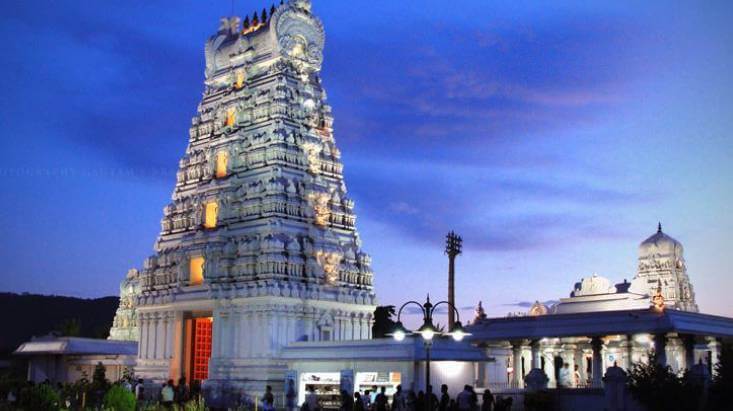
Amidst the verdant landscapes of Andhra Pradesh lies the majestic Tirupati Balaji Temple, a sanctuary of serenity and a testament to spiritual devotion. Known as one of the most affluent and visited holy temples in India and on the globe, it’s not just the architecture that captivates the soul but the unwavering faith of the pilgrims. As devotees ascend the Seshachalam hills, affectionately dubbed the “Seven Hills,” they are met by the tranquil embrace of greenery that sets the stage for a profound spiritual journey.
At the heart of this sacred complex stands the deity of Lord Venkateswara, a majestic black stone idol that embodies Lord Vishnu’s preserving essence. Here, the unique tradition of devotees sacrificing their locks is not merely a ritual but a poignant expression of devotion, with every strand of hair symbolizing a story of faith and surrender.
Whether it’s the famous Laddu Prasadam or the noble cause of feeding thousands through the temple’s “Anna Prasadam” initiative, its spirit of generosity knows no bounds. The temple’s atmosphere buzzes with divine energy, especially during the auspicious Vaikunta Ekadasi festival, likened to an opening of heavenly gates.
Architecturally, the temple stands as a crowning glory of Dravidian craftsmanship, with its elaborate sculptures and carvings that weave tales of mythology and majesty. Governed by the Tirumala Tirupati Devasthanams, the temple not only manages spiritual affairs but also serves as a cultural nucleus, celebrating the divine union of Lord Venkateswara and Goddess Padmavati with pomp and piety.
Beyond the rituals and reverence, the Tirupati Balaji Temple remains a beacon of cultural heritage, echoing with the rhythms of music, dance, and art, inviting the world to partake in its timeless saga of devotion.
Mahakaleshwar Temple Ujjain, Madhya Pradesh
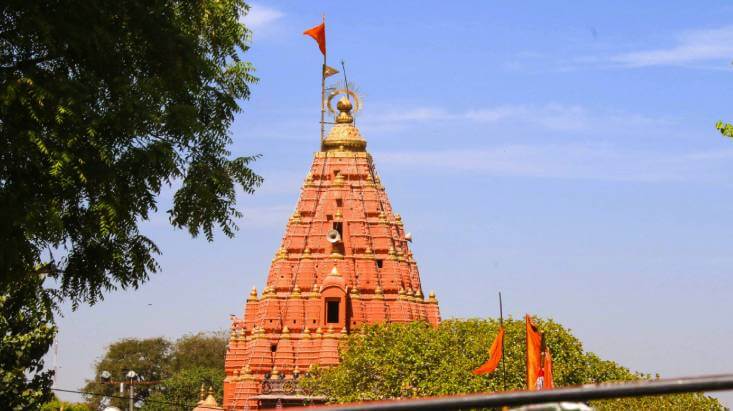
Shri Mahakaleshwar Temple is a highly revered temple that was established in the 6th century CE on the banks of the holy Shipra River in Ujjain. The temple is dedicated to one of the highest deities in Hinduism, Lord Shiva, in his fierce manifestation known as Mahakal. The deity is represented in the form of a lingam, which itself holds great significance. This lingam is one of the 12 jyotirlingas scattered throughout India, which are the most sacred abodes of Lord Shiva. This highly revered lingam is worshipped daily through a structured worship process that begins with the Abhishek, a ritual bath of the idol. You can witness these rituals early in the morning, but you need to register for them online. After the ritual bath, various offerings are made to the idol, including curd, honey, and sandal paste, followed by cleansing with milk and water. Finally, the jyotirlinga is adorned with ash and shringaar (decorations), followed by the Bhasma aarti, which is the most significant ritual of the temple.
The Mahakaleshwar Temple is situated on the banks of the Shipra River in Ujjain, where a massive pilgrimage fair is organized every 12 years, attracting millions of pilgrims who gather at the ghats of the Shipra River to take a holy dip in its waters. During this grand event, millions of devotees also visit the Mahakaleshwar Temple.
The Mahakaleshwar Temple of Ujjain is mentioned in numerous historic Indian literary works, including significant references by Kalidas.
Furthermore, many legends and rumors about the temple and secret underground passages add to the intrigue and draw of people to visit this temple, exemplifying the depth of religious belief.
You May Also Like to Read:
- Char Dham Yatra Travel Guide
- Best Places to Visit on the Way to Badrinath Dham
- Best Places to Stay in Kedarnath
- Interesting Facts About Kedarnath
- All You Need to Know about Kalimath Temple
- 12 Jyotirlingas in India: What You Should Know Before Going There?
- How to Plan 12 Jyotirlinga Temple Tour from Anywhere in India?
- Madhyamaheshwar Temple: A Spiritual & Adventure Retreat in the Himalayas
- Popular Devi Temples in Uttarakhand: Centre of Unwavering Beliefs
- 33 Popular Shiva Temples in Uttarakhand
- Why the Conch is Not Blown in Badrinath Temple
- Best Places to Visit in Kedarnath Dham
- Best Places to Visit in Yamunotri
- Best Places to Visit in Gangotri








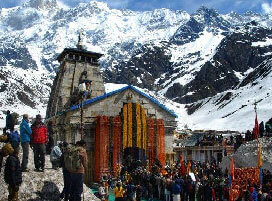
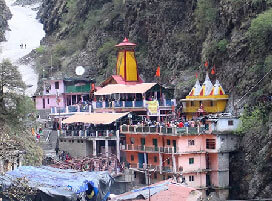
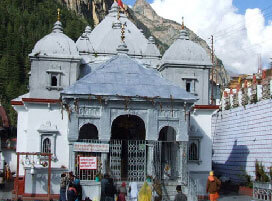
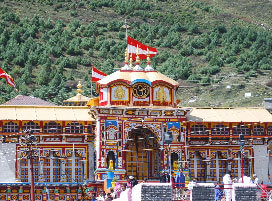
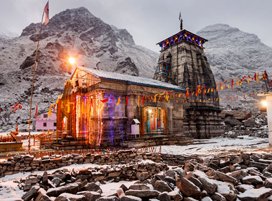

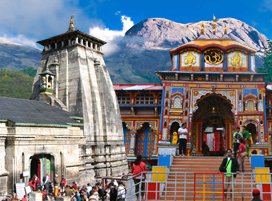
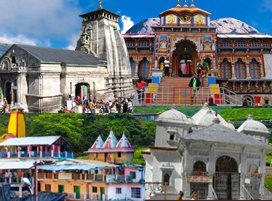
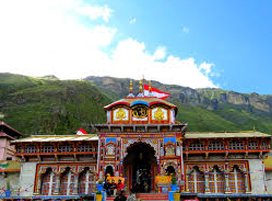
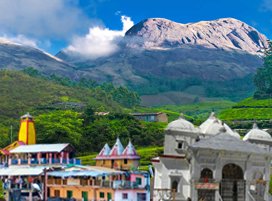
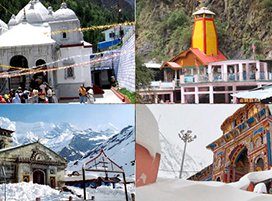
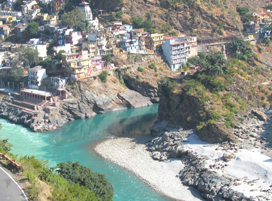

 Share
Share Home
Home Packages
Packages Book Now
Book Now